Geology Field-Trips around Scotland: The Assynt Geo-Park (2017)
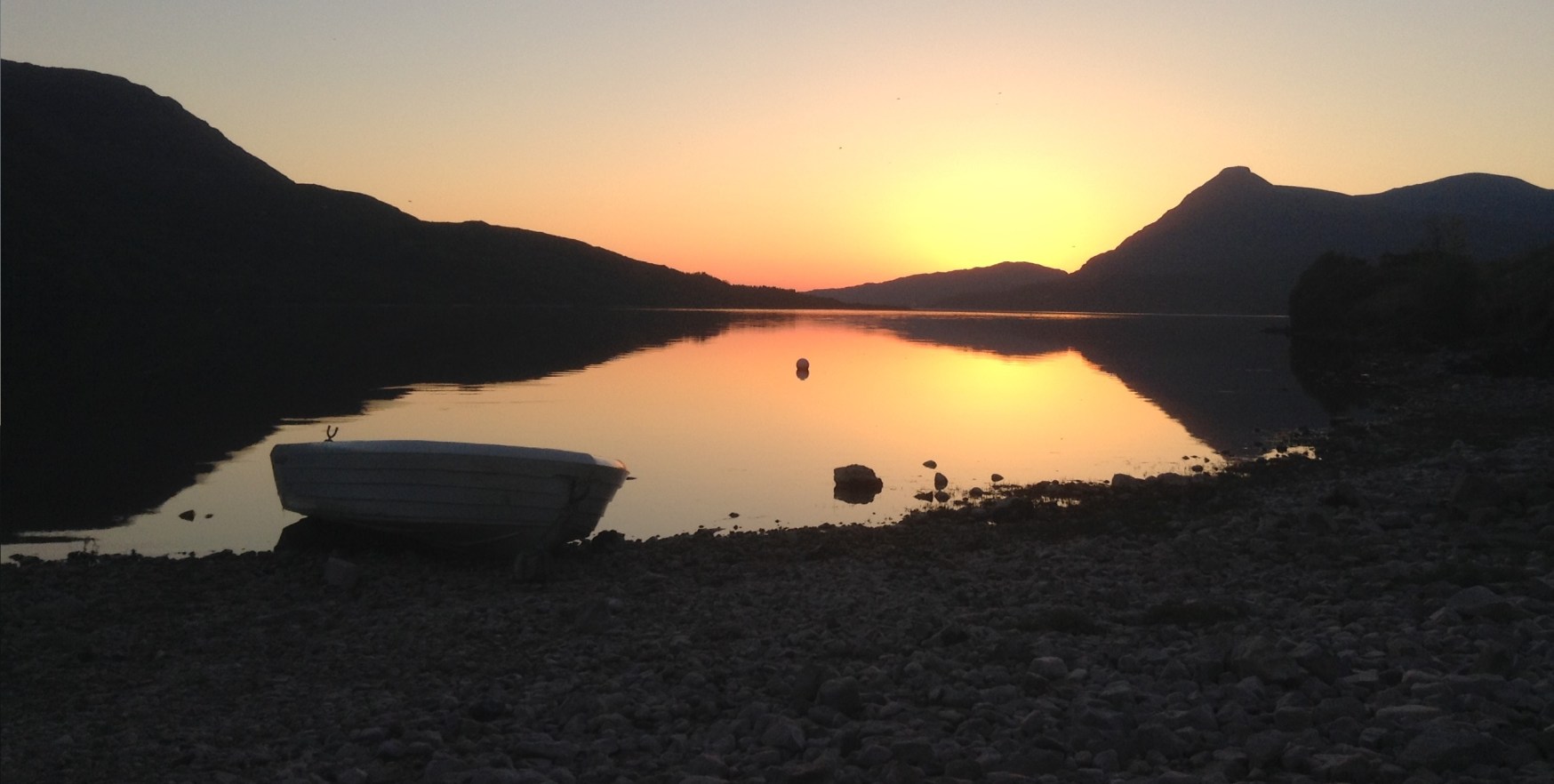
Through the Global Tectonics and the Rock Cycle course and the Field Skills for Geologist course I visited the wonderful parish of Assynt. Assynt is a geological wonder, with friendly people, great beaches and breath taking landscapes. I am extremely thankful for the University of Edinburgh for taking me there. In Assynt I practiced my geological field skills such as Triangulation on a map, measuring dip & dip direction of beds and taking accurate & comprehensive field notes. I visited many wonderful localities such as Knockan Crag, the outcrops at Loch Assynt and the Imbricates next to Ullapool. I geologically mapped the area north of Loch Assynt and the Imbricates section east of Ullapool. Outside of my geological work I visited the wonderful porcelain factory, Highland Stoneware, strolled down the many beaches on Assynt’s coast and sampled the taste of local pies. I spent two good weeks in the region. I hope reading about my adventure will delight you as much as being in the region delighted me.
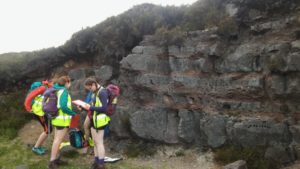
Sandstone Layers
Week 1
On day 0 we traveled from the bonnie city of Edinburgh to the remote town of Inchnadamph. It was amazing to see the change in geology and in the landscape as we moved through Scotland. I noticed it several times that the surface vegetation can be linked to the geology below. A micro example is how short grass preferred limestone while bracken liked the fucoid beds.
While we worked in Assynt we stayed at the Inchnadamph Lodge, a wonderful hostel with great rural cottages. It was great to listen to the bird songs in the morning and spot deer herds passing through the front yard in the evenings. A gentle river cut through the property allowing me to drift to sleep to the music of flowing water. The lecturers made a great choice by basing us there.
On day 1 we got a comprehensive presentation from our lecturers of the local geology, called: “From the crags to the coast”, where we started from the area with the Moine Thrust, studied the Cambrian Sequence and moved to have a look at the gneiss metamorphic basin in the western, coastal regions. This prepared us for the marked mapping of the north of Loch Assynt. Looking back, this was the easy part of the trip as we didn’t have to deal with the effects of tectonics on the land. From day 2 to day 6 we mapped out the Torridonian Sandstone basin; the unconformable contact between the Sandstone and the Quartzite; and the Cambrian Sequence which consisted of: Quartzite-Pipe Rock-Fucoid Beds-Salterella Grit-Limestone layers. I sedimentary logged one of the Fucoid Beds. The Fucoid bed was full of evidence for cross bedding, gradual deposition and algae mats. From the sedimentary log I theorised that Delta building processes created this layer. Outside of our main mapping area we moved into the tectonic zone, mapped out a limestone syncline and had a look at the Fucoid Bed- Salterella Grit Imbricates created by thrusting. Tectonic thrusting is when tectonic forces push an older rock layer above a younger rock layer at a shallow angle. After mapping out the region we consolidated our findings into a geological surface map, a cross section and a two page report.
On the final day of week 1 we concentrated our effort on the metamorphic region, familiarizing ourselves with the Lewisian Gneiss and the Moine Schist. This was considered a reward day since we finished our work a day early.
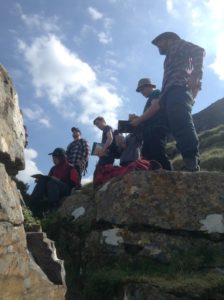
Looking at outcrops
Highland Stoneware
On our rest day we visited the world famous pottery factory, Highland Stoneware. The place makes a wide range of china, pottery and decorative tiles sold the world over. The cool part of their work was that they use local rocks to create the glazing and the colours for the different pots. They take the rocks from the field; grind them up into dust and bake it with the pottery for several hours between 1000-2000 Celsius Degrees. While in the oven, chemical reactions take place, generating a wide range of colours and glazes. The completed products looked beautiful. The fellow who shoved us around mentioned that the pottery they make attends competitions in places such as Japan. After seeing the plant I had the luck to find a local bakery and sample the locally made pies. The Highlanders are brilliant cooks.
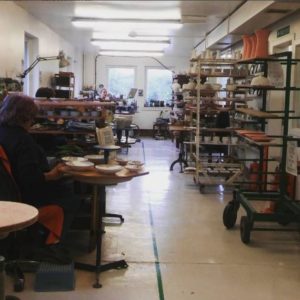
Highland Stoneware – The factory floor
Week 2
On week 2 we delved deeper into tectonics and the effects of thrust faulting on the landscape.
On the first day we didn’t do any mapping but with the supervision of Dr Simon Harley we went through the units present in the region and he showed us hidden outcrops. We saw blood red garnets as big as my fist, newer rock invading older rocks, pink zircon crystals and kilometers long thrust faulting. While the subject of metamorphism is hard, the structures the process produces are nothing but bonnie.
For the rest of the week we were mapping the area east of Ullapool where the Stoer and the Moine Thrust faults are located. We mapped the basic Cambrian sequence from last week. We noticed that some of the units repeated themselves or were laid in an illogical manner. We got to the imbricates zone which was lying bellow the Stoer thrust. We moved back to the normal Cambrian-sequences zone and mapped the normal fault that uplifted that section of the landscape. On the last days we mapped out the Moine Thrust and identified the gneiss and schist regions.
I loved the landscape that we were mapping through. The weather was unpredictable but it provided other worldly sites. In the morning bright sunshine filled up the valley while by the evening fog shrouded everything into mystery. Coupled with the seaside harbour the place is a truly unique place.
Beach Time
After all the hustle and the bustle of geology, we spent a good amount of time relaxing on the beaches of the North Sea. The highland seas are beautiful at summer, almost indistinguishable from the tropics. The backdrop of geology gave the place an inspiring drama. The sea walls were either made by orange and black stripped metamorphic gneiss or by crushed together breccias and conglomerates. I had a great time, I managed to sit down on the beach with a can of Irn-Bru and take in the sites.
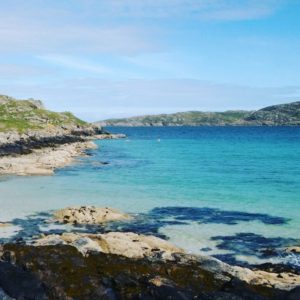
North-West Assynt coast
My Thanks:
This trip wouldn’t have been possible without The University of Edinburgh, my fellow colleagues, the supervising students and most importantly my lecturers. My fellow students made the trip more than enjoyable. The lecturers provided great insight and they were more than inspiring. I would like to especially thank Florian, Simon and Andrew.




Recent comments